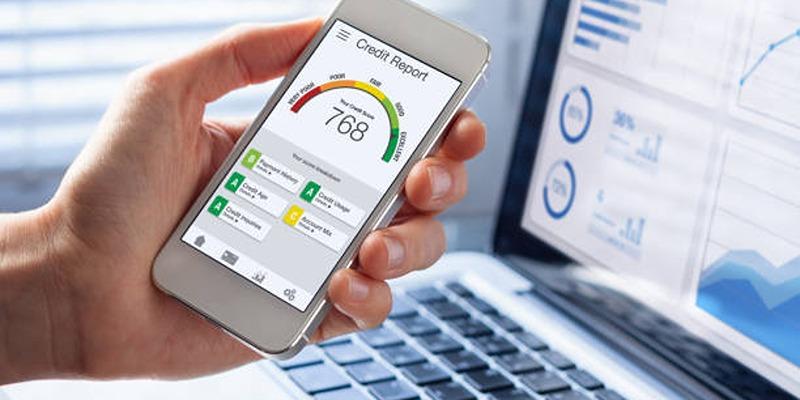Understanding Available Credit on Your Credit Card Statement
Understanding the available credit on your credit card statement is essential for managing your finances effectively. Available credit is the amount you can still spend without exceeding your credit limit. It helps you track your spending and avoid over-limit fees. By keeping an eye on this figure, you can ensure that your purchases fit your budget and maintain good financial health. It’s a simple but crucial part of credit card management.
What Is Available Credit?

Available credit is the remaining amount you can spend on your credit card at any given time. It’s calculated by subtracting your current balance—the amount you’ve already spent—from your total credit limit, which is the maximum you’re allowed to borrow.
For instance, if your credit card has a set limit and you’ve used part of it, your available credit is what’s left for additional purchases or transactions without exceeding the limit. This balance provides financial flexibility while ensuring you stay within the boundaries established by your card issuer.
How Is Available Credit Calculated?
Calculating your available credit is simple:
Available Credit = Credit Limit - Current Balance
However, several factors can influence this calculation:
- Pending Transactions: Pending transactions are payments or purchases that have been authorized but not yet posted to your account. These transactions temporarily reduce your available credit until they’re fully processed.
- Holds and Authorizations: Merchants, such as hotels or car rental companies, may place a hold on your card for an estimated amount. This hold limits your available credit until the final charge is processed or the hold is released.
- Fees and Interest Charges: Additional charges like late fees, annual fees, or accrued interest can increase your balance, further reducing your available credit.
Why Is Available Credit Important?
Understanding your available credit is essential for managing your finances effectively and maintaining overall financial health. Here’s why it matters:
1. Avoid Over-Limit Fees
Exceeding your credit limit can result in costly over-limit fees from your card issuer. By monitoring your available credit, you can ensure your spending stays within your limit, avoiding unnecessary charges. Staying aware of your remaining credit helps you manage your budget and prevent any unpleasant surprises.
2. Protect Your Credit Utilization Ratio
Your credit utilization ratio—the percentage of your credit limit currently in use—is a critical factor in determining your credit score. A lower ratio, ideally below a specific threshold, signals to lenders that you’re managing your credit responsibly.
Tracking your available credit allows you to control this ratio more effectively. For example, if you’re approaching your credit limit, paying off part of your balance can free up available credit and improve your utilization ratio, which benefits your credit score.
3. Plan Purchases Smartly
Knowing your available credit helps you plan your spending with confidence. It prevents declined transactions, which can be both inconvenient and embarrassing. Additionally, understanding your credit availability lets you make informed decisions about larger purchases or unexpected expenses.
How to Check Your Available Credit?
Monitoring your available credit is easy with the tools provided by most credit card issuers. Here are the best ways to keep track of it:
- Online Account Access: Log in to your credit card account through the issuer’s website or mobile app. Your available credit is usually displayed prominently on the dashboard for quick and easy reference.
- Set Up Alerts: Stay informed by enabling text or email alerts. These notifications can let you know when your available credit drops below a certain limit, helping you manage spending and avoid unexpected surprises.
- Contact Customer Service: Prefer a personal touch? Call your credit card issuer’s customer service team. Their representatives can provide real-time updates on your available credit and answer any questions you may have.
Smart Strategies to Maximize Your Available Credit
Enhance your financial flexibility with these practical tips:
1. Pay Your Balance Early
Reduce your current balance and free up available credit by making payments before your statement closing date. This strategy not only lowers your credit utilization ratio but also ensures a lower balance is reported to credit bureaus, which can boost your credit score over time.
2. Stay Well Below Your Credit Limit
Avoid maxing out your cards by keeping your spending significantly below your credit limit. While experts recommend using less than 30% of your total limit, aiming for 10% or lower can yield even better results for your credit health. Regularly reviewing your spending can help you maintain control and stay within these thresholds.
3. Request a Credit Limit Increase
If you frequently find yourself nearing your credit limit, consider requesting a higher limit from your credit card issuer. A higher limit increases your available credit and reduces your utilization ratio without requiring you to cut back on spending. However, use this increased capacity wisely and avoid the temptation to overspend.
4. Monitor Pending Transactions
Pending charges can temporarily impact your available credit, so keeping tabs on them is essential. By staying aware of these transactions, you can avoid unexpected reductions in credit that might hinder large purchases or lead to overspending. This habit can also help you better manage your overall spending.
Common Misconceptions About Available Credit:

1. Available Credit Equals Spending Power
Available credit shows how much you can spend but doesn’t factor in pending transactions or temporary holds. Always check your real-time balance to avoid surprises when making big purchases.
2. Available Credit Updates Immediately After Payment
Payments often take a few days to process and reflect in your available credit. Plan ahead to avoid exceeding your credit limit during this period.
3. High Available Credit Means No Debt
A high available credit doesn’t mean you’re debt-free. Carrying a balance can still lead to interest charges, so aim to pay off your full balance every month to stay financially healthy.
How Available Credit Affects Your Credit Score?
Your available credit is a key factor in determining your credit score, particularly through your credit utilization ratio. Here's what that means:
- Low Utilization: Using a small portion of your available credit (e.g., 10%) demonstrates responsible credit management, which lenders view favorably.
- High Utilization: Relying on a large portion of your available credit (e.g., 80%) can signal financial strain and hurt your credit score.
To improve your credit score, keep your available credit high and your utilization low. Over time, this balance can help you build a stronger financial profile.
Conclusion:
Your available credit plays a vital role in both your financial flexibility and overall credit health. Understanding how it’s determined, why it matters, and how to track it empowers you to make informed financial choices and steer clear of common mistakes. To maximize your available credit and maintain a solid financial foundation, remember these key strategies: pay your balance on time, keep your credit utilization low, and regularly monitor your credit card activity.












